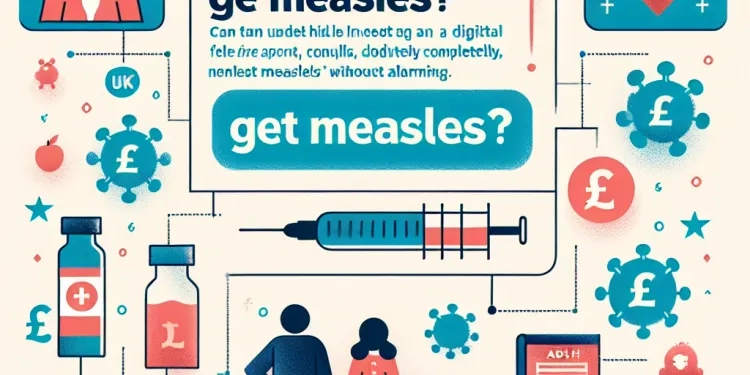Find Help
More Items From Ergsy search
-

Acute COPD in Adults: Antibiotics or not - Dr Nick Francis
Relevance: 100%
-

Myths about COPD
Relevance: 41%
-

COPD | NHS
Relevance: 41%
-

Antibiotics and You: An introduction to antibiotic resistant infections
Relevance: 30%
-

How do cortisol levels differ between acute and chronic stress?
Relevance: 28%
-

Can appendicitis be treated with antibiotics?
Relevance: 27%
-

Can I take antibiotics for a cold?
Relevance: 27%
-

How effective are antibiotics in treating Lyme disease?
Relevance: 27%
-

Can antibiotics treat norovirus?
Relevance: 27%
-

Why is antibiotic resistance a concern with gonorrhoea?
Relevance: 26%
-

Can adults get impetigo?
Relevance: 26%
-

What antibiotics are used to treat gonorrhoea?
Relevance: 25%
-

Can the bubonic plague become resistant to antibiotics?
Relevance: 25%
-

NHS Acute Care Anaphylaxis
Relevance: 24%
-

Efforts to Combat Antibiotic Resistance Gain Momentum with New Research Initiatives
Relevance: 23%
-

2 episodes of cellulitis and been given antibiotics but the redness doesn't seem to be improving?
Relevance: 22%
-

Can the measles vaccine be given to adults?
Relevance: 21%
-

Can adults have autism?
Relevance: 21%
-

Can adults have ADHD?
Relevance: 21%
-

Can adults get measles?
Relevance: 21%
-

Can adults get chickenpox?
Relevance: 21%
-

Can adults receive the MMR vaccine?
Relevance: 20%
-

What types of antibiotics are typically used to treat Lyme disease?
Relevance: 19%
-

What are some common fears or hesitations older adults have about joining new groups?
Relevance: 19%
-

Does sleep apnea occur only in adults?
Relevance: 18%
-

Why is binge drinking common among young adults?
Relevance: 18%
-

Are there any online communities for older adults interested in hobbies?
Relevance: 18%
-

What benefits do new hobbies provide for older adults?
Relevance: 18%
-

Are children more susceptible to concussions than adults?
Relevance: 18%
-

Can children take the same cold medications as adults?
Relevance: 17%
-

Can learning a new skill be considered a hobby for older adults?
Relevance: 17%
-

GPs Warn Antibiotic Overuse Could Lead to Superbug Crisis
Relevance: 17%
-

What is safe alcohol consumption in Adults?
Relevance: 17%
-

How can older adults find travel or adventure groups?
Relevance: 17%
-

How can older adults find local hobby groups?
Relevance: 17%
-

What role do libraries play in helping older adults find hobbies?
Relevance: 17%
-

How do cognitive changes in older adults influence driving risk?
Relevance: 17%
-

How can technology help older adults find new hobbies?
Relevance: 17%
-

How important is physical activity for older adults picking new hobbies?
Relevance: 17%
-

Are children more affected by screen time in relation to sleep than adults?
Relevance: 17%
Acute COPD in Adults: Antibiotics or Not - Dr. Nick Francis
Introduction to Chronic Obstructive Pulmonary Disease (COPD)
Chronic Obstructive Pulmonary Disease (COPD) is a prevalent respiratory condition that affects a significant portion of the adult population in the United Kingdom. This disease is characterized by persistent respiratory symptoms and airflow limitation due to airway and/or alveolar abnormalities. Acute exacerbations of COPD (AECOPD) are periods where symptoms worsen, necessitating additional treatment.The Role of Antibiotics in Acute COPD
One of the critical questions in managing AECOPD is whether antibiotics are required. Dr. Nick Francis, a prominent figure in respiratory medicine, advocates a nuanced approach to this decision. The use of antibiotics in AECOPD is not always warranted and should be primarily driven by clinical indication.When Are Antibiotics Recommended?
According to Dr. Francis, antibiotics should be considered in the presence of clinical signs suggestive of bacterial infection. Indicators include increased sputum purulence, fever, elevated white blood cell counts, or signs of pneumonia on a chest X-ray. These clinical features suggest a bacterial aetiology, which may benefit from antibiotic therapy to reduce morbidity and potentially improve outcomes.Guidelines for Antibiotic Use
NICE (National Institute for Health and Care Excellence) guidelines recommend antibiotics in specific scenarios, such as moderate to severe exacerbations, especially in those with frequent exacerbations or coexisting comorbidities. The choice of antibiotic should be guided by local antimicrobial resistance patterns and individual patient factors. Commonly recommended antibiotics include amoxicillin, doxycycline, or macrolides.Risks of Unwarranted Antibiotic Use
Overuse of antibiotics in AECOPD poses significant risks, such as the development of antibiotic resistance, which is a growing concern in the UK. It also increases the risk of adverse side effects and contributes to the overburdening of healthcare resources.Non-Antibiotic Management
Dr. Francis emphasizes the importance of non-antibiotic strategies in managing AECOPD, such as bronchodilators, corticosteroids, and supplemental oxygen. These treatments address the inflammation and bronchoconstriction typical of AECOPD and are fundamental in managing the condition effectively.Conclusion
The decision to use antibiotics in acute COPD should be individualized and based on clinical evidence of bacterial infection, as emphasized by Dr. Nick Francis. By adhering to guidelines and employing careful clinical judgment, healthcare providers can optimize the management of AECOPD while mitigating the risks associated with antibiotics. For patients in the United Kingdom, prudent antibiotic use is crucial in preserving their efficacy and ensuring sustainable healthcare practices.Acute COPD in Adults: Antibiotics or Not - Dr Nick Francis
Understanding Acute COPD in Adults
Chronic Obstructive Pulmonary Disease (COPD) is a common respiratory condition that mainly affects middle-aged and older adults who smoke. In the UK, it's responsible for significant morbidity and healthcare costs. An episode of acute exacerbation of COPD is characterized by worsening breathlessness, increased sputum production, and purulent sputum. These episodes can severely affect patients' quality of life and may require hospitalization.Role of Antibiotics in Acute COPD Exacerbations
The use of antibiotics for acute exacerbations of COPD remains a debated topic. While viral infections are the primary trigger for COPD exacerbations, bacterial infections can complicate the situation, potentially justifying antibiotics. Dr. Nick Francis highlights that clinicians must carefully assess symptoms such as fever, purulent sputum, and significant breathlessness to determine whether antibiotics are necessary.Guidelines for Prescribing Antibiotics
NICE guidelines suggest that antibiotics should not be routinely prescribed for every COPD exacerbation. Instead, they should be reserved for cases where there are clear signs of bacterial infection. Dr. Nick Francis recommends considering factors such as the severity of the episode, patients' history of frequent exacerbations, and previous antibiotic use. Amoxicillin, doxycycline, or clarithromycin are commonly used antibiotics in these cases.Antibiotic Resistance Considerations
An important concern in the use of antibiotics for COPD exacerbations is antibiotic resistance. Overprescribing antibiotics can lead to resistance, making infections harder to treat in the future. The UK has pledged to reduce inappropriate antibiotic use as part of its Antimicrobial Resistance Strategy. Dr. Nick Francis underscores the importance of prudent antibiotic prescribing to combat this issue.Conclusion
The decision to prescribe antibiotics for acute COPD exacerbations should be made carefully. Clinical judgment, guided by evidence-based guidelines, is crucial in deciding whether antibiotics are appropriate. By doing so, healthcare professionals can help minimize unnecessary antibiotic use and combat antibiotic resistance while still effectively managing acute COPD exacerbations. This HTML content is structured to convey key information about the role of antibiotics in treating acute COPD exacerbations, while also considering the unique healthcare context of the United Kingdom.Acute COPD in Adults: Antibiotics or Not - Dr. Nick Francis
What is Chronic Obstructive Pulmonary Disease (COPD)?
COPD is a lung disease. It is common in adults in the United Kingdom. People with COPD have trouble breathing because their airways are blocked. Sometimes, symptoms get worse suddenly. This is called an acute exacerbation of COPD (AECOPD). When this happens, extra treatment is needed.Do We Need Antibiotics for Acute COPD?
A big question for doctors is if antibiotics should be used when COPD gets worse. Dr. Nick Francis is an expert on this. He says antibiotics are not always needed. Doctors should think carefully and look for signs before giving antibiotics.When Should Antibiotics Be Used?
Dr. Francis says antibiotics might be used if there are signs of a bacterial infection. These signs include: - Thick or discolored mucus - Fever - High white blood cell count - Signs of pneumonia on a chest X-ray These symptoms mean antibiotics might help.Guidelines for Using Antibiotics
The NICE guidelines say to use antibiotics in certain cases. This includes: - Moderate to severe symptoms - Frequent flare-ups - Other health problems The type of antibiotics depends on local guidelines and what works best for the patient. Common antibiotics are amoxicillin, doxycycline, or macrolides.Why Should We Be Careful with Antibiotics?
Using antibiotics too much can be bad. It can make bacteria resistant to antibiotics. This is a big problem in the UK. Antibiotics can have side effects, and using them too much wastes healthcare resources.Other Treatments for COPD
Dr. Francis says there are other treatments besides antibiotics. These include: - Bronchodilators - Corticosteroids - Supplemental oxygen These treatments help reduce swelling and open up airways. They are very important for treating COPD.Conclusion
Using antibiotics for COPD should be a careful decision. Doctors should look at the signs of infection first, says Dr. Nick Francis. By following guidelines and using good judgment, doctors can treat COPD well. Being careful with antibiotics helps keep them effective for everyone.Acute COPD in Adults: Antibiotics or Not - Dr Nick Francis
What is Acute COPD?
COPD is a lung disease. It mainly affects adults who are middle-aged and older, especially those who smoke. In the UK, it causes a lot of illness and costs the healthcare system a lot of money. When COPD gets worse suddenly, it can make breathing much harder, cause more coughing with mucus, and change the color of the mucus. This can make life very hard for people and sometimes they need to go to the hospital.Do We Need Antibiotics for Acute COPD?
There is a lot of discussion about using antibiotics for sudden COPD problems. Most times, these problems are caused by viruses. But sometimes bacteria can make things worse, and then antibiotics might help. Dr. Nick Francis says doctors should check if there is a fever, a lot of colored mucus, and serious trouble with breathing. These things help decide if antibiotics are needed.When to Give Antibiotics
The NICE guidelines say not to give antibiotics for every COPD problem. They should only be given if there's a strong sign of a bacterial infection. Dr. Nick Francis suggests looking at how bad the problem is, if it happens often, and if antibiotics have been used before. Some common antibiotics for this are amoxicillin, doxycycline, or clarithromycin.Why Be Careful with Antibiotics?
If we use too many antibiotics, they can stop working. This is called antibiotic resistance, and it can make infections really hard to treat later. The UK wants to use fewer antibiotics to fight this problem. Dr. Nick Francis says it is very important to give antibiotics only when really needed.Summary
Doctors should be careful when they decide to give antibiotics for COPD. They should use good guidelines to help them make this choice. By doing this, doctors can help stop the problem of antibiotics not working and still take good care of people with COPD. This text gives important information about using antibiotics for sudden COPD problems. It also talks about how things work in the UK healthcare system.Frequently Asked Questions
What is acute COPD exacerbation?
Acute COPD exacerbation is a sudden worsening of COPD symptoms, such as increased breathlessness, cough, and production of phlegm.
What causes exacerbations in COPD?
Exacerbations in COPD are often triggered by respiratory infections, environmental pollutants, or other lung irritants.
When are antibiotics necessary for acute COPD exacerbations?
Antibiotics may be necessary if bacterial infection is suspected, especially in cases with increased sputum purulence, increased volume, or additional symptoms like fever.
What are the common bacteria that cause infections in COPD exacerbations?
Common bacteria include Haemophilus influenzae, Streptococcus pneumoniae, and Moraxella catarrhalis.
What antibiotics are commonly used to treat bacterial exacerbations in COPD?
Antibiotics such as amoxicillin, doxycycline, or clarithromycin are commonly used depending on local guidelines and antibiotic resistance patterns.
Are antibiotics always the first line of treatment for COPD exacerbations?
No, antibiotics are not always the first line. Treatment initially focuses on bronchodilators and corticosteroids to manage symptoms.
What should I do if I experience a sudden worsening of my COPD symptoms?
You should contact your healthcare provider for advice on appropriate treatment, which might include adjusting medications or considering antibiotics.
How can I tell if my COPD exacerbation is due to an infection?
Signs of an infection include a change in the colour and consistency of sputum, fever, and an increase in breathlessness or cough.
Can viral infections also cause COPD exacerbations?
Yes, viral infections such as the common cold or influenza can lead to exacerbations, and often antibiotics are not required as they target bacteria.
Why is it important to not overuse antibiotics in COPD?
Overuse of antibiotics can lead to antibiotic resistance, reducing their effectiveness against bacterial infections in the future.
How can I reduce the risk of COPD exacerbations?
Preventative measures include avoiding smoking, getting vaccinated against flu and pneumonia, and reducing exposure to environmental pollutants.
What non-antibiotic treatments might I receive for a COPD exacerbation?
Non-antibiotic treatment may include increased inhaler use, steroids like prednisone, and supplemental oxygen if necessary.
What role does vaccination play in managing COPD?
Vaccinations can prevent influenza and pneumococcal infections, which are significant causes of exacerbations in people with COPD.
Are there risks associated with using antibiotics when not needed?
Yes, unnecessary antibiotic use can lead to side effects, allergic reactions, and increased risk of developing resistant bacterial strains.
Where can I find more information about managing COPD in the UK?
For more information, you can visit the NHS website or consult with your GP or respiratory specialist for guidance tailored to your condition.
What does a flare-up of COPD mean?
COPD is a lung problem that makes it hard to breathe.
A flare-up happens when your breathing gets worse.
You might cough more, have trouble breathing, or feel extra tired.
Ask a doctor for help if you have a flare-up.
It helps to stay calm and use your breathing medicines.
When COPD gets worse all of a sudden, it's called an "acute COPD exacerbation." This means people might have a hard time breathing, cough more, and make more phlegm (sticky stuff in the throat).
What makes COPD worse?
COPD is a problem with breathing. Sometimes, breathing can get worse. This is called an "exacerbation." Here are some things that can make COPD worse:
- Being around smoke or pollution
- Getting a cold or the flu
- Not taking your medicine
- Being very tired or stressed
To help you with COPD, you can:
- Use a calendar to keep track of your medicine
- Ask an adult to help you when you feel sick
- Use pictures to understand how to take your medicine
COPD flare-ups can happen because of colds, dirty air, or other things that bother your lungs.
When do you need antibiotics for a COPD flare-up?
People with COPD sometimes have flare-ups. This means their breathing gets much worse.
If this happens, you might need antibiotics. Antibiotics are medicines that help fight infections.
Ask a doctor if you need antibiotics when:
- Your cough is getting worse.
- You're coughing up more mucus, or it changes color.
- You have a fever or feel very tired.
Tools and techniques to help:
- Ask someone to go to the doctor with you.
- Write down your symptoms before you go.
- Take your time and ask the doctor to explain things clearly.
If you might have a bacterial infection, you might need to take medicine called antibiotics. This is really important if your mucus (snot) is turning a yellow or green color, if you have more of it than usual, or if you also have a high temperature (fever).
Here are some tips to help you understand:
- Ask a doctor or nurse to explain if you don’t understand.
- Use picture books about health to learn more.
- Ask someone to read aloud to you if that helps you understand better.
Which germs can make lung problems worse in people with COPD?
COPD is a lung problem that makes it hard to breathe. Sometimes, it can get worse if germs cause an infection.
Here are some germs (or bacteria) that can make COPD worse:
- Germ 1: Haemophilus influenzae (H. flu) - This is a common germ that can cause lung infections.
- Germ 2: Streptococcus pneumoniae - This germ can cause pneumonia, which is a lung infection.
- Germ 3: Moraxella catarrhalis - Another germ that can lead to lung infections.
If you have COPD, it's important to talk to your doctor if you feel worse. You may need medicine to help. Reading tools can help understand this information better. Ask someone you trust for help if you need it.
Some germs that people often get are:
- Haemophilus influenzae
- Streptococcus pneumoniae
- Moraxella catarrhalis
These names look tricky, but you can use tools like text-to-speech to help say them out loud. You can also break big words into smaller parts to make them easier to read. Ask someone to read with you.
What Medicines Help When COPD Gets Worse Because of Bacteria?
People with COPD sometimes get sicker because of bacteria. Doctors give them special medicine called antibiotics. Here are some common antibiotics:
- Amoxicillin
- Doxycycline
- Azithromycin
These medicines help to kill the bacteria and make people feel better.
If you find reading hard, try using a reading tool on the computer that can read the text out loud or make the text bigger. These tools can help you understand better.
Doctors use antibiotics like amoxicillin, doxycycline, or clarithromycin. They choose which one based on local rules and how germs resist these medicines.
If you find it hard to read, try using a reading tool that reads the words out loud for you.
Do doctors always use antibiotics first to treat COPD flare-ups?
No, antibiotics are not always the first choice. Doctors start with medicine called bronchodilators and corticosteroids. These help with breathing and make you feel better.
What to Do if Your COPD Gets Worse Suddenly
If your COPD (Chronic Obstructive Pulmonary Disease) symptoms suddenly get worse, here are some steps you can take:
- Stay Calm: Take slow, deep breaths.
- Use Your Inhaler: Use your inhaler as your doctor showed you.
- Contact a Doctor: Call your doctor for help or have someone do it for you.
- Seek Emergency Help: If breathing gets too hard, call emergency services or have someone take you to the hospital.
It’s helpful to have a plan written down with steps to follow. Keep it somewhere easy to find. You can also use reminders, like phone alerts, to check your symptoms daily.
Talk to your doctor. They can tell you what treatment is best. You might need to change your medicine or take antibiotics.
How do I know if my COPD flare-up is because of an infection?
COPD is a lung problem. A flare-up means it gets worse suddenly. Sometimes, an infection can cause this.
Here are some signs of infection:
- You cough up more mucus, or it changes color.
- You have a fever. This means your body feels hot.
- You feel more tired than usual.
- You have a sore throat or a blocked nose.
If you have these signs, tell your doctor. They can help you feel better.
To help understand better, you can use:
- Pictures or drawings.
- Help from a friend or family member.
- Talking to a nurse or doctor who can explain.
When you have an infection, there are signs to look for. Your spit might change color or feel different. You might get a fever. You could also find it harder to breathe or have a worse cough.
Can viruses make COPD worse?
Yes, viruses can make COPD symptoms worse. When you have COPD, your lungs are not healthy. A virus can make it harder to breathe.
If you have COPD, talk to your doctor about vaccines. Vaccines can help protect you from some viruses.
Using a diary to track your symptoms can also help you notice changes early. This way, you can get help when you need it.
Yes, viruses like the cold or flu can make symptoms worse. You usually don't need antibiotics because they fight bacteria, not viruses.
Why should we use less antibiotics for COPD?
It is important not to use too many antibiotics when someone has COPD (a lung problem). This is because:
- Antibiotics are strong medicines that help fight germs. But, if we use them too much, they might not work well anymore.
- Germs can become "superbugs." Superbugs are germs that antibiotics can't kill easily.
- Not using too many antibiotics helps keep them strong so they can work when we really need them.
If you need help understanding, try:
- Asking someone you trust to explain.
- Using pictures to help you understand better.
Using too many antibiotics can make them stop working well. This is called antibiotic resistance. Then, they might not help us fight infections in the future.
How can I lower the chance of COPD flare-ups?
COPD is a lung problem that makes it hard to breathe. Sometimes, it can get worse suddenly. This is called a flare-up. Here are some ways to help stop that from happening:
- Take your medicine: Always take your medicine like the doctor says. It helps keep your lungs healthy.
- Get your vaccines: Shots like the flu shot can stop you from getting sick.
- Stay away from smoke and strong smells: Things like smoke can make breathing harder.
- Do breathing exercises: Practice breathing exercises to make your lungs stronger. Ask your doctor for advice on exercises.
- Use a clean air filter at home: Keep the air in your home clean. An air filter can help.
- See your doctor regularly: Go to the doctor for check-ups to keep track of your health.
If you want more help, you can also ask a nurse or a trusted family member to help you remember these tips.
To stay healthy:
- Don't smoke.
- Get shots to stop you from getting the flu and pneumonia.
- Breathe clean air. Stay away from pollution.
What treatments can I get for COPD that are not antibiotics?
COPD can make it hard to breathe. Sometimes, it gets worse. This is called an exacerbation. Here are some ways to feel better without using antibiotics:1. Inhalers: Inhalers help you breathe easier by opening your airways.
2. Oxygen Therapy: Sometimes, getting extra oxygen helps you feel better and gives you more energy.
3. Breathing Exercises: Practicing breathing slowly and deeply can help you control your breathing.
4. Healthy Eating: Eating good foods can make your body stronger.
5. Staying Active: Moving around and exercising gently can help your lungs work better.
Talk to your doctor to find the best plan for you. They can help find what works for you.
There are tools that can help you understand better, like talking to a nurse or using a picture guide. Ask for help when you need it!
If you are not using antibiotics, you might take your inhaler more often. You might also use medicine called steroids, like prednisone. If you need it, you can use extra oxygen to help you breathe.
How do vaccines help people with COPD?
Vaccines are like a shield. They protect you from getting really sick.
If you have COPD, vaccines are very important. They stop you from getting dangerous lung infections.
Here are some tips to help:
- Talk to your doctor about which vaccines you need.
- Write down when you get your vaccines to keep track.
- Ask a family member or friend to remind you about vaccine appointments.
Getting a shot can stop you from getting the flu or lung infections. These can make breathing problems like COPD worse.
Is it bad to take antibiotics if you don't need them?
Yes, using antibiotics when they are not needed can make you sick. You might have side effects, like feeling dizzy or sick to your stomach. Some people can have allergic reactions, like a rash or itching. If you take antibiotics too much, it can make some germs strong. This means the medicine won’t work anymore.
Here are some tips to help:
- Ask your doctor if you really need antibiotics.
- Always take the medicine just like the doctor says.
- Talk to your doctor if you feel sick after taking the medicine.
Where can I learn more about taking care of COPD in the UK?
You can find help to understand COPD better.
Here are some places you can look:
- Ask your doctor for advice.
- Visit the NHS website for information. The web address is https://www.nhs.uk
- Search for simple books at the library about COPD.
- Use the internet to look up COPD. Ask an adult to help you if it is tricky.
Useful tools can include:
- A voice assistant to read information to you.
- Apps that explain things with pictures and simple words.
For more help, you can look at the NHS website. You can also talk to your doctor or a breathing expert for advice that is right for you.
Useful Links
- Ergsy carfully checks the information in the videos we provide here.
- Videos shown by Youtube after a video has completed, have NOT been reviewed by ERGSY.
- To view, click the arrow in centre of video.
- Most of the videos you find here will have subtitles and/or closed captions available.
- You may need to turn these on, and choose your preferred language.
- Go to the video you'd like to watch.
- If closed captions (CC) are available, settings will be visible on the bottom right of the video player.
- To turn on Captions, click settings .
- To turn off Captions, click settings again.
More Items From Ergsy search
-

Acute COPD in Adults: Antibiotics or not - Dr Nick Francis
Relevance: 100%
-

Myths about COPD
Relevance: 41%
-

COPD | NHS
Relevance: 41%
-

Antibiotics and You: An introduction to antibiotic resistant infections
Relevance: 30%
-

How do cortisol levels differ between acute and chronic stress?
Relevance: 28%
-

Can appendicitis be treated with antibiotics?
Relevance: 27%
-

Can I take antibiotics for a cold?
Relevance: 27%
-

How effective are antibiotics in treating Lyme disease?
Relevance: 27%
-

Can antibiotics treat norovirus?
Relevance: 27%
-

Why is antibiotic resistance a concern with gonorrhoea?
Relevance: 26%
-

Can adults get impetigo?
Relevance: 26%
-

What antibiotics are used to treat gonorrhoea?
Relevance: 25%
-

Can the bubonic plague become resistant to antibiotics?
Relevance: 25%
-

NHS Acute Care Anaphylaxis
Relevance: 24%
-

Efforts to Combat Antibiotic Resistance Gain Momentum with New Research Initiatives
Relevance: 23%
-

2 episodes of cellulitis and been given antibiotics but the redness doesn't seem to be improving?
Relevance: 22%
-

Can the measles vaccine be given to adults?
Relevance: 21%
-

Can adults have autism?
Relevance: 21%
-

Can adults have ADHD?
Relevance: 21%
-

Can adults get measles?
Relevance: 21%
-

Can adults get chickenpox?
Relevance: 21%
-

Can adults receive the MMR vaccine?
Relevance: 20%
-

What types of antibiotics are typically used to treat Lyme disease?
Relevance: 19%
-

What are some common fears or hesitations older adults have about joining new groups?
Relevance: 19%
-

Does sleep apnea occur only in adults?
Relevance: 18%
-

Why is binge drinking common among young adults?
Relevance: 18%
-

Are there any online communities for older adults interested in hobbies?
Relevance: 18%
-

What benefits do new hobbies provide for older adults?
Relevance: 18%
-

Are children more susceptible to concussions than adults?
Relevance: 18%
-

Can children take the same cold medications as adults?
Relevance: 17%
-

Can learning a new skill be considered a hobby for older adults?
Relevance: 17%
-

GPs Warn Antibiotic Overuse Could Lead to Superbug Crisis
Relevance: 17%
-

What is safe alcohol consumption in Adults?
Relevance: 17%
-

How can older adults find travel or adventure groups?
Relevance: 17%
-

How can older adults find local hobby groups?
Relevance: 17%
-

What role do libraries play in helping older adults find hobbies?
Relevance: 17%
-

How do cognitive changes in older adults influence driving risk?
Relevance: 17%
-

How can technology help older adults find new hobbies?
Relevance: 17%
-

How important is physical activity for older adults picking new hobbies?
Relevance: 17%
-

Are children more affected by screen time in relation to sleep than adults?
Relevance: 17%


